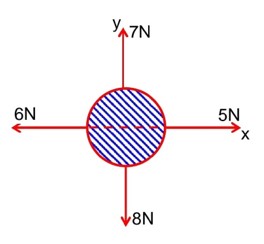Class 11th
Get insights from 8k questions on Class 11th, answered by students, alumni, and experts. You may also ask and answer any question you like about Class 11th
Follow Ask QuestionQuestions
Discussions
Active Users
Followers
New answer posted
3 months agoNew answer posted
3 months agoNew answer posted
3 months agoNew answer posted
3 months agoContributor-Level 10
Yes. Friction is a contact force that works against the relative motion between two surfaces. It can be static, which prevents motion. It can also be kinetic, which resists motion that's already happening.
New answer posted
3 months agoContributor-Level 10
The four key contact forces that you will read in Class 11 Physics are normal force, friction, tension, and spring force. Each of these forces needs physical contact and follows Newton's Third Law. They come into play during motion, compression, stretching, or when objects rest on surfaces. These contact forces help in drawing the free-body diagrams (FBDs) and solving problems related to the laws of motion.
New answer posted
3 months agoContributor-Level 10
An object usually experiences four primary forces. First is the gravitational force (or weight) pulling it downward. Surfaces exert normal force, while frictional force works against motion. Then the applied or tension force starts any movement. These forces can either balance each other out or be unbalanced.
Taking an Exam? Selecting a College?
Get authentic answers from experts, students and alumni that you won't find anywhere else
Sign Up on ShikshaOn Shiksha, get access to
- 65k Colleges
- 1.2k Exams
- 679k Reviews
- 1800k Answers



